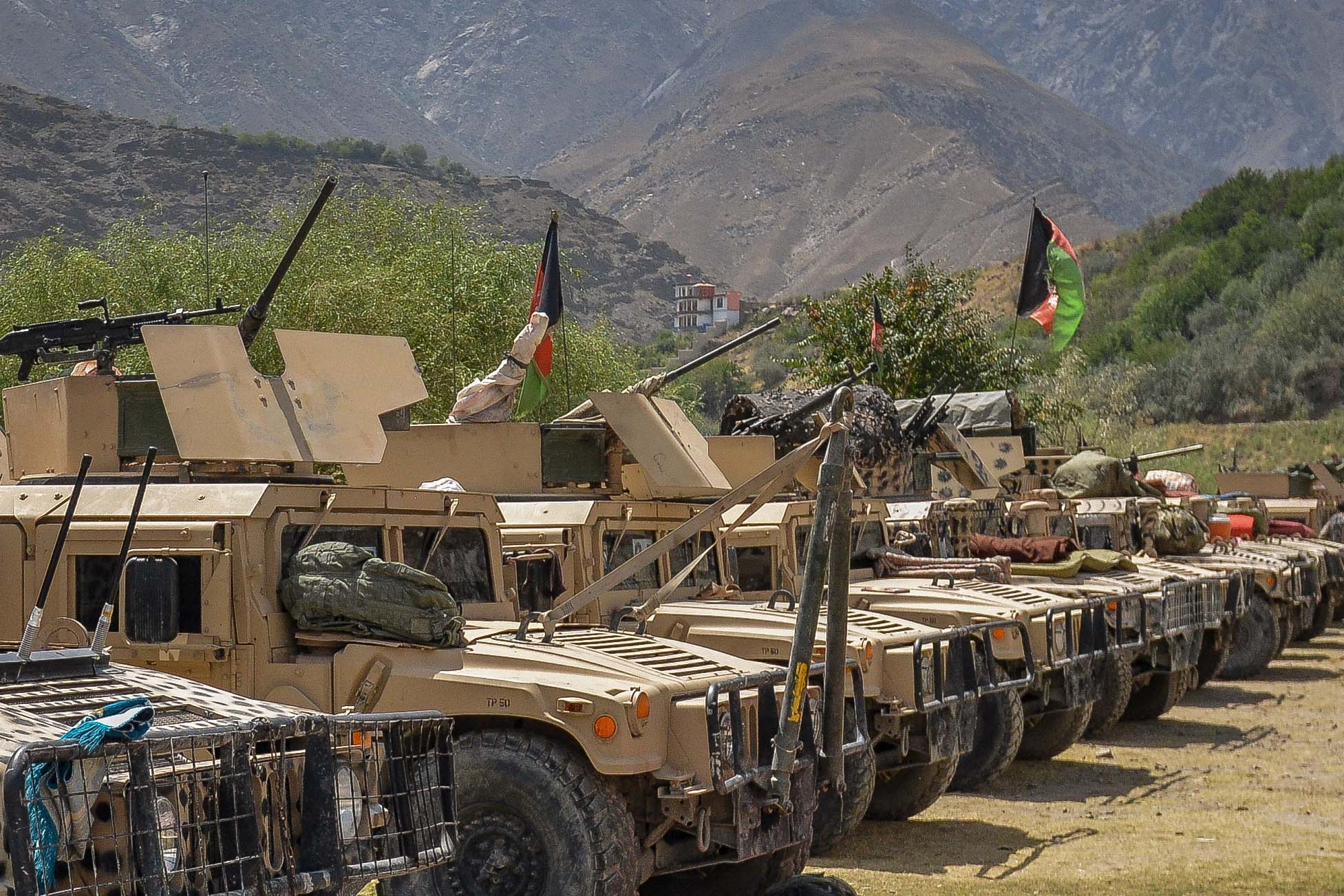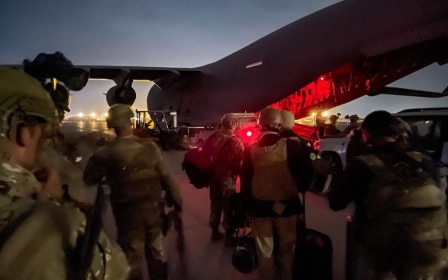US military equipment left behind in Afghanistan spotted in Iran: Report

US military equipment, including armoured vehicles worth hundreds of thousands of dollars each, have reportedly been spotted in Iran following the US withdrawal from Afghanistan, several social media accounts have reported.
Kian Sharifi, a BBC journalist focused on Iranian politics and social media, tweeted on Wednesday several photographs of Humvees and other military vehicles on a highway connecting the central city of Semnan to the city of Garmsar, southeast of the capital Tehran.
Sharifi said the photos came from an Iranian Telegram channel, which speculated the vehicles were either sold by the Taliban to Iran, or were taken from Afghan soldiers fleeing the country after the group took over most of the country, including the capital, Kabul, last month.
According to the Russian outlet Sputnik's Persian language service, Iran allegedly bought armoured US-supplied ground vehicles, unmanned aerial vehicles (UAVs), and helicopters belonging to the Afghan army.
New MEE newsletter: Jerusalem Dispatch
Sign up to get the latest insights and analysis on Israel-Palestine, alongside Turkey Unpacked and other MEE newsletters
The Russian news outlet cited unnamed "news sources", and added that the equipment was purchased for a quarter of the amount they are worth and that Tehran was probably moving the equipment to research centres for reverse engineering.
The Pentagon declined to comment on the reports, however, Army Major Rob Lodewick, a Pentagon spokesman, said that while a large amount of US equipment provided to the Afghan security forces "are likely to now be in Taliban hands", the equipment was "intended to fight a low-tech insurgency."
"It is not the type of equipment that will be of great strategic use to any force, and does not represent a significant threat to US forces or the militaries of neighbouring countries," Lodewick told Middle East Eye.
Between 2002 and 2017, the US gave the Afghan military an estimated $28bn in weaponry, including guns, rockets, night-vision goggles and even small drones for intelligence-gathering, as well as 208 aircraft, Amwaj media reported.
When US forces were evacuating Afghanistan, they are reported to have destroyed some of their remaining weapons and equipment as they would likely end up in the hands of the Taliban, Al Jazeera reported.
A source told Reuters that, according to a recent US intelligence assessment, the Taliban are believed to control more than 2,000 armoured vehicles, including US Humvees, and up to 40 aircraft - potentially including Black Hawk helicopters, scout attack helicopters, and military drones.
Saudi Arabia's former intelligence chief, Prince Turki al-Faisal, said earlier this week that he feared American weapons could now fall into the hands of armed groups such as al-Qaeda.
Iran-Taliban relations
Bismillah Mohammadi, defence minister for the now-collapsed Afghan government, tweeted an image of the equipment circulating on social media, and referred to Iran as "a bad neighbour".
Iran, which shares a 900km border with Afghanistan, has not yet officially commented on the reports.
The Islamic Republic has reportedly been anxious about the ongoing situation in Afghanistan.
Iran's relationship with the Taliban stretches back decades and has alternated between hostility and alliance. Though the Taliban only emerged in 1994, its predecessors had enduring links with Afghanistan's neighbour to the west as well.
Several months ago, as a precautionary measure, Tehran initiated diplomatic contact with the Taliban in an attempt to get it to halt its military campaign against government forces and avoid dragging the country into a civil war.
Tehran has also seen an influx of Afghans fleeing to Iran in the aftermath of the Taliban takeover.
Following a request from the Taliban, Iran began to resume fuel exports to Afghanistan last month.
Middle East Eye delivers independent and unrivalled coverage and analysis of the Middle East, North Africa and beyond. To learn more about republishing this content and the associated fees, please fill out this form. More about MEE can be found here.





